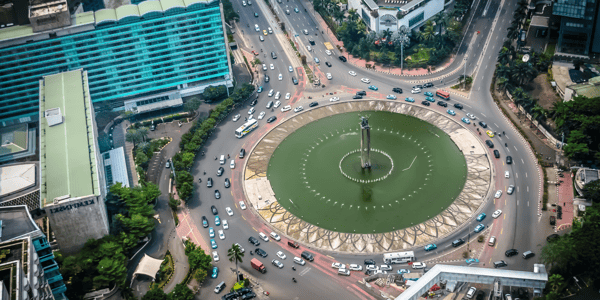

Roundabouts are becoming increasingly popular in cities and towns throughout the United States, due to their efficiency and safety compared to traditional intersections. However, they can be confusing and it is easy to make a mistake that can lead to a serious accident. In this article, we will discuss the pros and cons of roundabouts, as well as the causes of roundabout accidents. We will also provide information to help you navigate them safely so you can avoid personal injury and legal issues.
Pros of Roundabouts
There are many advantages to roundabouts compared to traditional intersections. They allow traffic to flow smoothly, reduce the number of stops, and increase safety. Studies have shown that roundabouts reduce car accidents by up to 90% compared to traditional intersections due to their design features. The circular structure forces drivers to slow down and yields control of the intersection from left-turners to oncoming traffic, making it safer for all users. Additionally, pedestrians can easily cross the street in marked crosswalks since traffic flows so slowly.
Cons of Roundabouts
Despite these advantages, there are some disadvantages associated with roundabouts. Drivers may find them confusing and difficult to navigate if they are unfamiliar with them, leading to an increased risk of accidents. Furthermore, they take up more space than traditional intersections and can be difficult for large vehicles like trucks or buses to maneuver safely.
Common Causes of Accidents
The most common causes of roundabout accidents are failing to yield at entry points, misjudging gaps in oncoming traffic, turning too quickly into a lane that is already occupied by another vehicle or pedestrian crossing the road, running red lights or stop signs at exit points, or driving too fast through the roundabout.
How You Can Avoid Accidents
To help you avoid a personal injury accident at a roundabout, there are several important steps you should follow:
- Slow down when entering the roundabout and make sure you have a clear view of all lanes before proceeding.
- Yield right-of-way at entry points until there is enough space in traffic for you to enter without impeding any other vehicles on the road.
- Pay attention to road markings and make sure you’re in the correct lane when exiting the roundabout.
- Follow speed limits at all times; speeding through a roundabout significantly increases your chances of getting into an accident or having your vehicle hit by another vehicle or pedestrian crossing the road illegally.
- Only overtake other vehicles if there is plenty of room in your lane and never overtake on the left side as this will put both drivers at risk for an accident.
- Be aware of pedestrians who may be crossing near your lane or crossing paths with your vehicle; always give them enough time and space before proceeding through the intersection.

